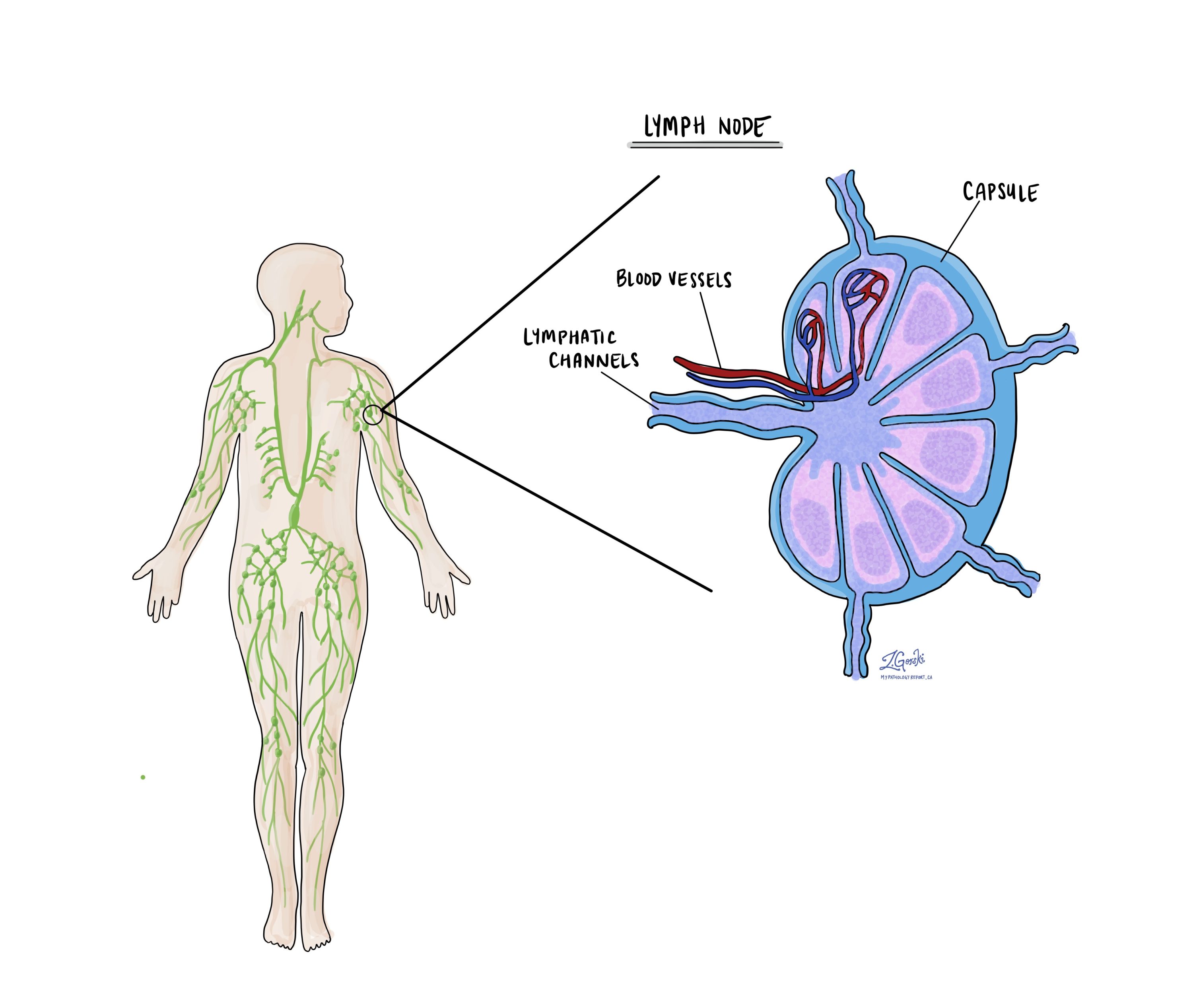by Emily Goebel, MD FRCPC
October 3, 2022
What is an immature teratoma?
An immature teratoma is a type of ovarian cancer. It develops from specialized germ cells in the ovary. Because teratomas start from a type of cell that has the ability to turn into any other type of cell, teratomas may contain a variety of tissue types including skin, brain, intestine, and muscle. In fact, any type of tissue can be found in a teratoma. Most immature teratomas contain a mixture of mature tissue that resembles adult tissue and immature tissue that is normally found in the developing human (embryo or fetus).

How do pathologists make this diagnosis?
The diagnosis can only be made after the tumour is removed and tissue is examined under a microscope by a pathologist. Although any type of immature tissue may be found in an immature teratoma, the pathologist must-see immature brain tissue in order to make the diagnosis. Your pathologist will examine the tumour closely to determine the amount of immature brain tissue present. This determines the histologic grade of the immature tumour.
Histologic grade
For immature teratomas, pathologists use the word grade to describe the amount of immature brain tissue found in the tumour. The grade can only be determined after the tumour has been examined under the microscope.
Pathologists divide immature teratomas into three grades as follows:
- Grade 1 – Only a small amount of immature brain tissue is found in a grade 1 tumour. Specifically, the immature brain tissue must occupy an area smaller than one low-power field of view when the tumour is examined under the microscope.
- Grade 2 – A moderate amount of immature brain tissue is found in a grade 2 tumour. The immature brain tissue occupies an area larger than one low-power field of view but no more than 3 low-power fields of view when examined under a microscope.
- Grade 3 – Large areas of immature brain tissue are found in a grade 3 tumour. The immature brain tissue occupies more than three low-power fields of view when the tumour is examined under the microscope.
Using the information above, immature teratomas are further divided into low and high grades. Grade 1 is called low grade. Grade 2 and 3 are called high grade because they are more likely to spread to other organs.
Tumour size
This is the size of the tumour measured in centimetres (cm). The tumour size is only measured after the entire tumour has been removed.
Ovarian surface involvement
Your pathologist will carefully examine the tissue under the microscope to see if there are any tumour cells on the surface of the ovary. Tumour cells on the surface of the ovary increase the risk that the tumour will spread to other organs in the pelvis or abdomen. It is also used to determine the tumour stage.
Other organs or tissue involved
Small samples of tissue are commonly removed in a procedure called a biopsy to see if tumour cells have spread to the pelvis or abdomen. These biopsies which are often called omentum or peritoneum are sent for pathological examination along with the tumour. Other organs (such as the bladder, small intestine, or large intestine) are not typically removed and sent for pathological examination unless they are directly attached to the tumour. In these cases, your pathologist will examine each organ under the microscope to see if there are any tumour cells attached to those organs. Tumour cells in other organs are used to determine the tumour stage.
Lymph nodes
Lymph nodes are small immune organs located throughout the body. Tumour cells can travel from the tumour to a lymph node through lymphatic channels located in and around the tumour (see Lymphovascular invasion above). The movement of tumour cells from the tumour to a lymph node is called metastasis. Your pathologist will carefully examine all lymph nodes for tumour cells. Lymph nodes that contain tumour cells are often called positive while those that do not contain any tumour cells are called negative. Most reports include the total number of lymph nodes examined and the number, if any, that contain tumour cells. If tumour cells are found in a lymph node, the size of the area involved by the tumour will also be measured and described in your report. Tumour cells found in a lymph node is associated with a higher risk that the tumour cells will be found in other lymph nodes or in a distant organ such as the lungs. The size of the area with tumour cells in the lymph nodes are used to determine the nodal stage.


